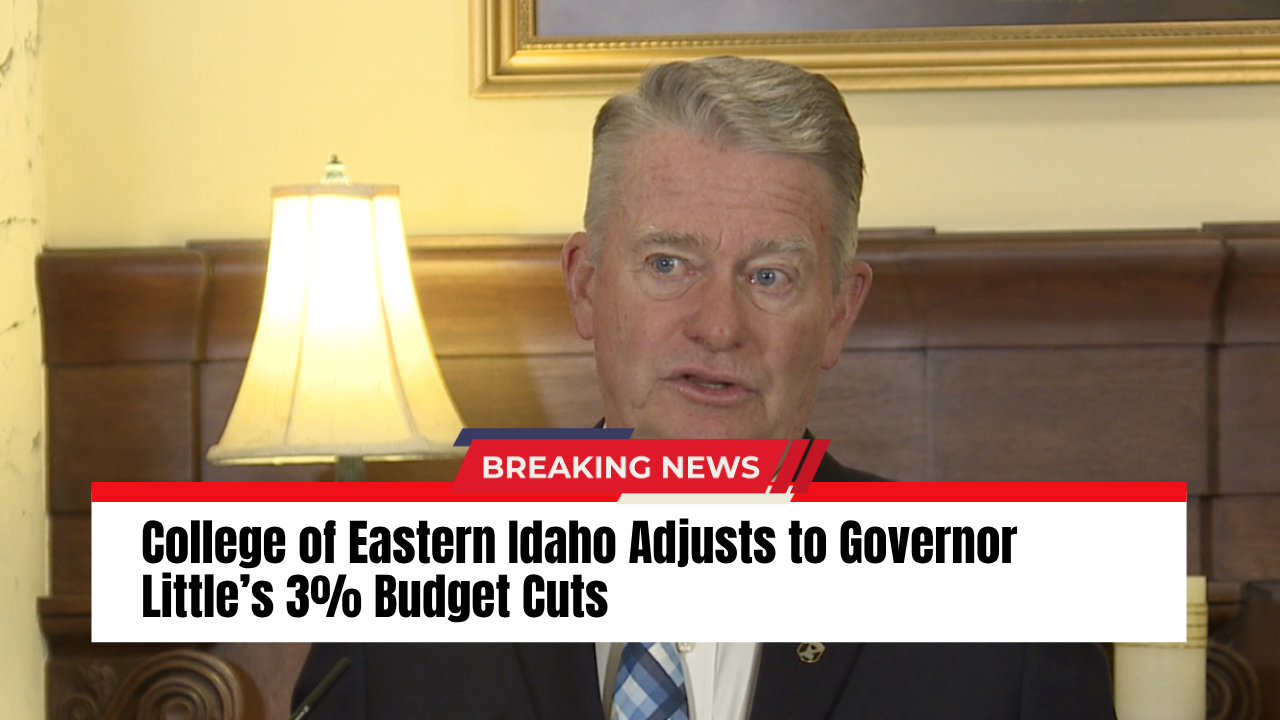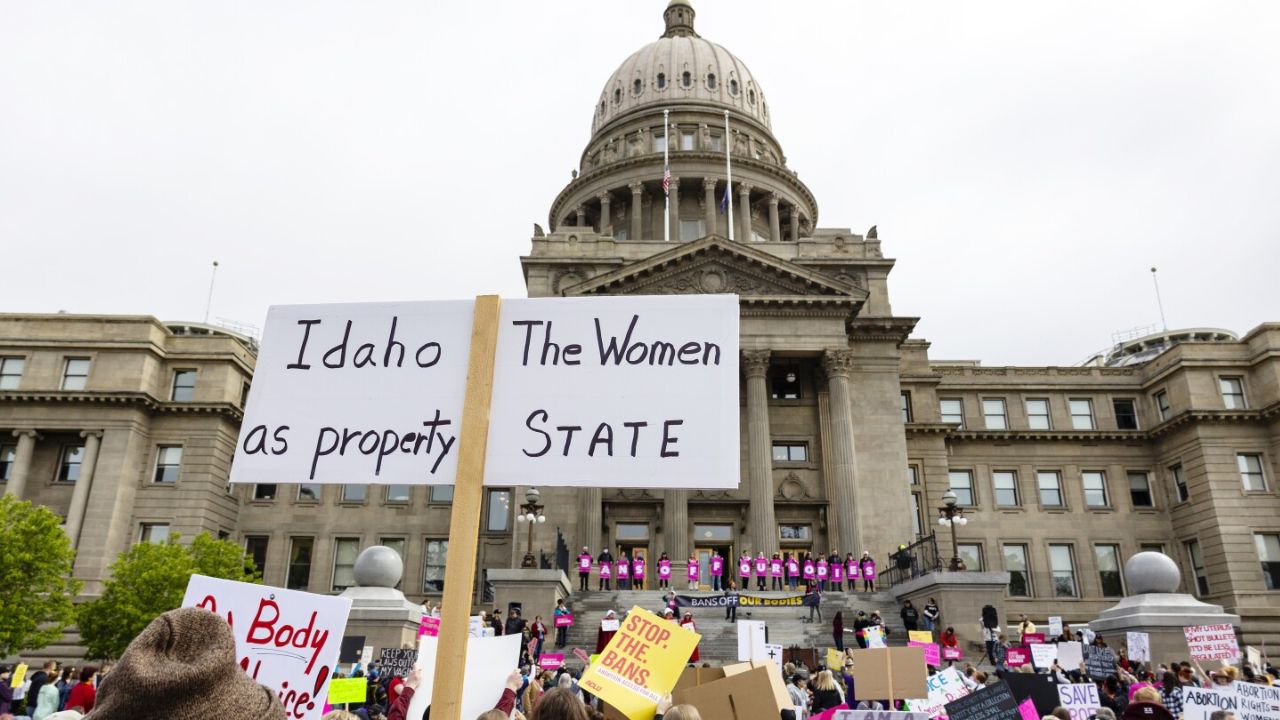The College of Eastern Idaho (CEI) is preparing to absorb a 3% reduction in state funding following Governor Brad Little’s recent directive for all state agencies to tighten budgets. The cuts, which will take effect in the 2026 fiscal year, are part of a broader effort to stabilize Idaho’s finances amid slowing revenue growth and increased spending pressures.
Governor Little’s office announced earlier this month that the cuts aim to ensure long-term fiscal sustainability while maintaining funding for essential state services. For CEI and other Idaho public institutions, the challenge will be to maintain quality education and workforce training while managing smaller budgets.
A Strategic Approach to Budget Reductions
CEI President Rick Aman confirmed that the college is evaluating multiple options to meet the 3% reduction target without disrupting student learning or key workforce programs. The institution’s approach centers on cost efficiency, program prioritization, and innovation.
“We are looking carefully at operational areas where savings can be found without affecting the student experience,” Aman said. “Our mission to provide affordable, high-quality education for eastern Idaho remains unchanged.”
The 3% reduction will translate to approximately $850,000 in annual savings for the College of Eastern Idaho, based on its current state-funded budget of roughly $28.5 million. Administrators say they will focus on trimming non-instructional expenses, delaying certain facility upgrades, and leveraging digital tools to reduce administrative costs.
| Area of Impact | Description | Expected Adjustment |
|---|---|---|
| Administrative Operations | Streamline processes and reduce overhead | $300,000 savings |
| Facility Maintenance | Delay non-essential upgrades | $200,000 savings |
| Technology and Procurement | Expand digital systems and vendor partnerships | $150,000 savings |
| Staff Training & Travel | Reduce out-of-state conferences and travel costs | $100,000 savings |
| Program Consolidation | Merge low-enrollment classes | $100,000 savings |
Despite the financial challenges, CEI leaders say they remain optimistic. “This is an opportunity to become more efficient and more responsive to changing economic needs,” said Aman.
Balancing Budget Cuts and Student Needs
The Idaho Division of Financial Management (dfm.idaho.gov) outlined that the cuts are necessary due to a slower-than-expected growth in state revenues, largely influenced by inflation and higher operational costs across state agencies. Governor Little emphasized that the reductions are “precautionary” and designed to prevent deeper cuts in the future.
For CEI, the most pressing concern is ensuring continued access to workforce training programs in key industries like healthcare, manufacturing, and energy — all critical to Idaho’s economic growth.
The college has already taken steps to offset budget pressures by expanding partnerships with local employers and increasing its use of federal workforce grants. Programs such as Idaho LAUNCH, which provides training reimbursements for high-demand careers, have helped CEI continue serving both students and employers despite tighter budgets.
“We are aligning our programs with regional workforce needs,” said Vice President of Instruction, Dr. Kathy Smith. “That means focusing resources where they’ll have the greatest impact on job placement and community development.”
In addition to program alignment, CEI is exploring shared service models with nearby institutions, including the College of Southern Idaho and Idaho State University, to pool resources for online education, advising, and technical support.
Broader Implications Across Idaho
The Governor’s 3% budget cut impacts all Idaho state agencies, including the Department of Education, Department of Health and Welfare, and higher education institutions. For the State Board of Education, which oversees CEI, Boise State University, and the University of Idaho, the focus has shifted toward sustainability and long-term planning.
Governor Little praised Idaho’s colleges for their proactive stance, noting that institutions like CEI have demonstrated fiscal responsibility since the COVID-19 pandemic.
“Idaho’s higher education system continues to provide strong returns for taxpayers,” Little said in a press release. “By adjusting now, we’re protecting essential programs for the future.”
State legislators have also voiced support for maintaining funding levels for career-technical education (CTE) and dual-credit programs — two areas that have seen consistent growth at CEI in recent years.
In the 2024–25 academic year alone, CEI enrolled over 3,600 students, including more than 1,000 dual-credit high school students. Enrollment trends remain stable, suggesting that demand for affordable local education will continue to rise even as funding tightens.
Looking Forward
While the College of Eastern Idaho faces tough decisions, leaders insist the institution’s mission of accessibility and workforce readiness remains intact. The college plans to expand scholarship offerings through private donations and pursue new grants from the U.S. Department of Education and Idaho Workforce Development Council.
“We’re determined to adapt without compromising quality,” Aman said. “These adjustments are temporary, but the impact of education in our community is lasting.”
The CEI board will finalize its revised 2026 budget plan in December. Meanwhile, faculty and staff have been encouraged to propose cost-saving ideas and identify operational improvements.
Local residents and business leaders remain supportive of CEI’s approach, recognizing its central role in preparing Idaho’s workforce for emerging industries.
“CEI has always been an engine for economic growth in this region,” said Idaho Falls Chamber of Commerce President Lisa Whittaker. “We’re confident they’ll come through this challenge stronger and more innovative.”
The College of Eastern Idaho’s response to Governor Little’s 3% budget cuts highlights a broader story of adaptation and resilience across Idaho’s higher education system. While the reductions pose short-term challenges, CEI’s strategic planning, community partnerships, and focus on innovation are positioning it to continue delivering quality education and workforce training for years to come.



